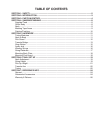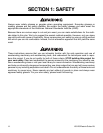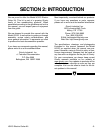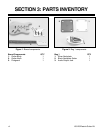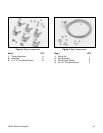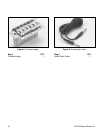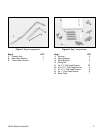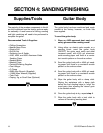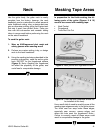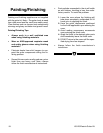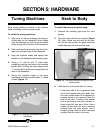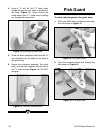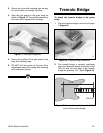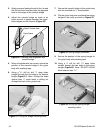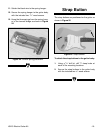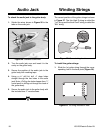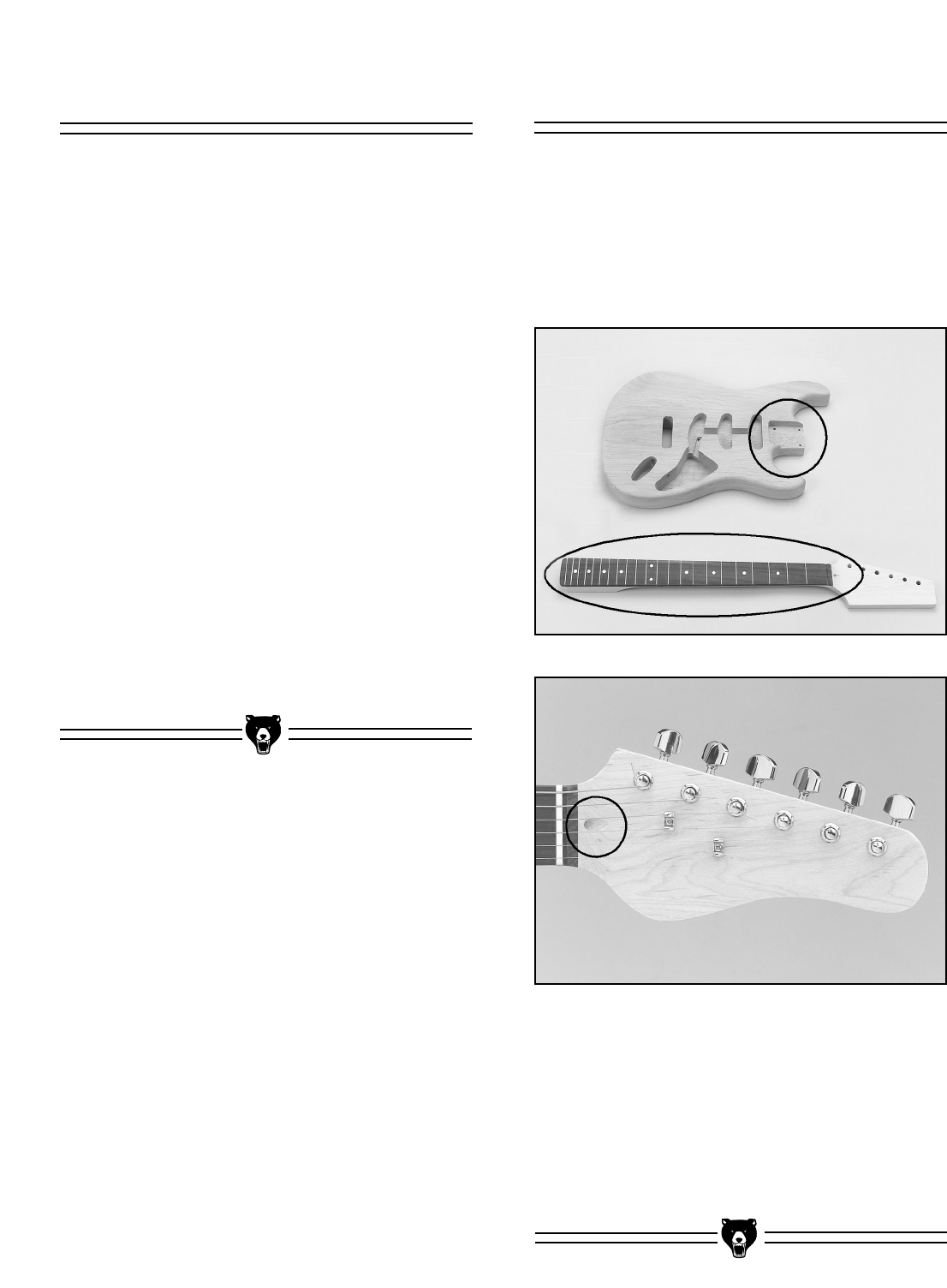
H3123 Electric Guitar Kit -9-
Like the guitar body, the guitar neck is mostly
complete from the factory; however, the neck
headstock can be customized to reflect personal
taste. Additional cutting, inlay, or design work can
give an otherwise ordinary guitar that custom look
that sets it apart from others! Note—Take your
time with this sub-section and consider testing
ideas in scrap wood before performing the work
on the actual headstock.
To sand the guitar neck:
1. Wear an ANSI-approved dust mask and
safety glasses when sanding wood!
2. Perform any custom cutting, inlay, or design
work to the neck headstock.
3. Using the sanding technique described in the
previous sub-section, sand the entire guitar
neck, EXCEPT for the fingerboard surface
(Figure 9). Note—Sanding the fingerboard
will affect the playability of the guitar, and
could lead to unrepairable damage.
Neck
In preparation for the finish coating, the fol-
lowing parts of the guitar (Figures 9 & 10)
need to be covered with masking tape:
• Neck Pocket
• Fingerboard
• Truss Rod Cut-Out
Masking Tape Areas
Figure 9. Neck pocket and fingerboard areas.
Use a small stick of wood to carefully press all the
masking tape edges securely to the guitar pieces.
The finish coat can seep under these edges,
especially near corners, uneven edges, and
where the frets meet the fingerboard. Note—
Failure to correctly mask off these areas could
result in unrepairable damage to the guitar.
Figure 10. Truss rod area (hardware should not
be installed at this time).



